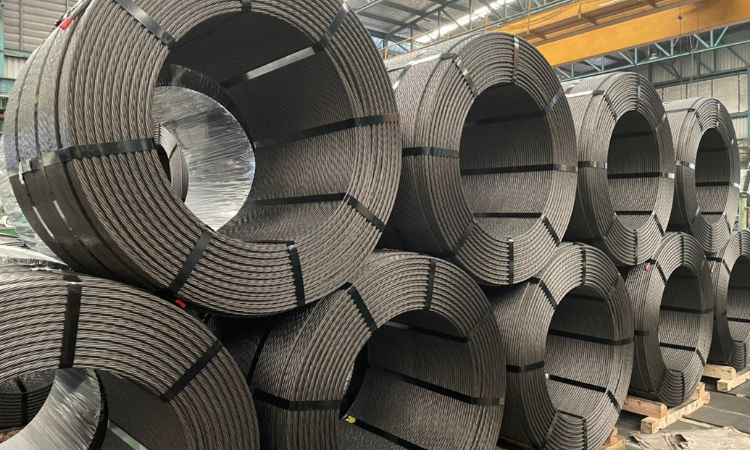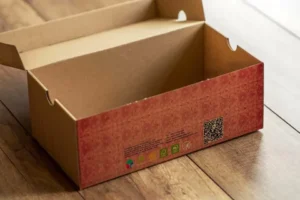The United States prestressed concrete (PC) wire and strand market size reached approximately USD 476.44 million in 2023. The market is projected to grow at a CAGR of 4.3% between 2024 and 2032, reaching a value of around USD 656.68 million by 2032. This growth is driven by increasing infrastructure projects, the demand for durable and efficient building materials, and advancements in construction technologies.
Understanding Prestressed Concrete Wire and Strand
Prestressed concrete wires and strands are critical components in modern construction. These materials enhance the tensile strength of concrete structures, allowing them to withstand higher loads and resist cracking. The use of prestressed concrete ensures durability, reduced material consumption, and cost efficiency, making it a preferred choice for a wide range of infrastructure projects.
Market Segmentation
By Surface Coatings
- Uncoated:
Uncoated PC wires and strands are widely used in indoor or less corrosive environments where additional protection is not required. Their affordability and ease of use make them a common choice for general applications. - Galvanized:
Galvanized coatings provide superior corrosion resistance, making these wires ideal for outdoor and marine environments. Bridges and overpasses, where exposure to the elements is significant, often employ galvanized PC wires. - Epoxy Coated:
Epoxy-coated wires offer enhanced durability and protection against harsh chemicals and extreme environmental conditions. These are frequently used in heavy-duty construction projects, such as coastal infrastructure and wastewater treatment facilities. - Others:
Emerging surface coatings, including advanced polymers and nano-coatings, are gaining traction for their ability to provide tailored protection while maintaining performance standards.
By Application
- Bridges:
Bridges represent a significant portion of the demand for PC wires and strands. The ability of prestressed concrete to span large distances with minimal support makes it a cornerstone of modern bridge construction. Key infrastructure initiatives across the U.S., including federal and state-level programs, are expected to drive this segment’s growth. - Buildings:
High-rise buildings and commercial complexes rely heavily on prestressed concrete for structural stability. The increasing urbanization in the U.S. has spurred the development of multi-story buildings, further fueling demand for PC wires. - Others:
This category includes applications such as precast concrete products, utilities, and specialized projects like stadiums and industrial facilities.
Regional Analysis
The U.S. prestressed concrete wire and strand market shows varying growth trends across regions:
- Northeast: Investments in urban renewal and transit infrastructure are driving demand.
- Midwest: Home to major highways and bridges, this region sees consistent usage of PC wires in repairs and new constructions.
- Southeast: Rapid urbanization and population growth fuel the demand for residential and commercial construction.
- West Coast: Earthquake-resistant construction practices, which heavily rely on prestressed concrete, contribute to market growth.
Market Dynamics
SWOT Analysis
- Strengths: High durability and efficiency of prestressed concrete; growing adoption in key infrastructure projects.
- Weaknesses: Dependence on volatile raw material prices, including steel.
- Opportunities: Rising government spending on infrastructure modernization and renewable energy projects.
- Threats: Competition from alternative materials and environmental regulations.
Porter’s Five Forces Analysis
- Competitive Rivalry:
The market features intense competition among established players focusing on product innovation and cost reduction. - Threat of New Entrants:
High capital requirements and technical expertise act as barriers to new players. - Bargaining Power of Suppliers:
The market is sensitive to fluctuations in raw material prices, particularly steel, giving suppliers significant leverage. - Bargaining Power of Buyers:
With a variety of options available, buyers demand cost-effective solutions without compromising quality. - Threat of Substitutes:
Alternatives such as fiber-reinforced polymers are emerging but have not yet matched the versatility and cost-efficiency of PC wires.
Key Indicators for Demand
- The federal government’s infrastructure plans, such as the Bipartisan Infrastructure Law, allocate significant funding for roads, bridges, and public transit, driving demand for PC wires and strands.
- Urbanization trends and the need for sustainable construction materials further boost market growth.
Key Indicators for Price
- Volatility in steel prices significantly impacts the cost of PC wires and strands.
- Regional trade policies and tariffs on imported materials also influence pricing.
Competitive Landscape
The U.S. prestressed concrete wire and strand market is dominated by several key players who focus on innovation and capacity expansion to meet growing demand. Major players include companies with extensive distribution networks and advanced manufacturing capabilities.
- Market Leaders:
These companies leverage economies of scale and long-standing industry expertise to maintain market share. - Emerging Players:
Small and medium enterprises are gaining traction by offering customized solutions and targeting niche markets.
Strategic partnerships, mergers, and acquisitions are common in this space, with companies aiming to enhance their product portfolios and geographic reach.






